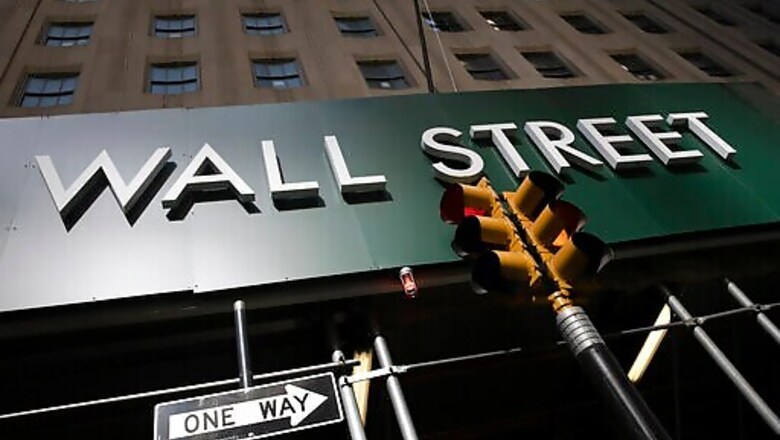
views
NEW YORK Earnings for big U.S. companies were historically bad last quarter and yet still much better than expected.
CEOs across the country are almost finished telling investors how their companies fared from April through June, when pandemic-related shutdowns pummeled the economy into the worst recession in decades. With just a handful of S&P 500 companies still to report, their combined profit is down roughly 33% from a year earlier, according to FactSet.
That’s on par with the 35% plummet recorded in the first quarter of 2009, during the worst of the Great Recession. But analysts came into this reporting season expecting even worse: they’d forecast a 44% plunge. And on Wall Street, beating expectations is often more important than whether earnings rise or fall.
The not-as-terrible-as-expected results are bolstering investors’ confidence that the economy is recovering from its spring free-fall. The latest earnings reports helped the S&P 500 erase its remaining losses and ascend to a new all-time high.
Stocks’ rocket ride of more than 50% began in March when the Federal Reserve and Congress promised trillions of dollars in aid. They continued to rise as reports showed budding improvements in the economy.
Investors pay particular attention to corporate profits because stock prices tend to track them over the long term.
Earnings are the stock markets lifeblood, and they serve as the basis for how most investors value companies, Chris Haverland, a strategist at Wells Fargo Investment Institute wrote in a recent report.
Tech companies continued to play a huge role in the stock market delivering better-than-expected corporate profits last quarter.
Analysts thought tech companies’ earnings weakened by nearly 10% in the spring from a year earlier. But the pandemic has accelerated work-from-home and other trends that benefit the sector, so instead they’re on track to report modest growth for the quarter.
Apple was a headliner: It said its earnings per share jumped 18% to $2.58. That blew past analysts’ expectations of a drop to $2.05.
Earnings strength was nowhere close to uniform, however. Some of the pandemic’s obvious losers failed to meet even the low bar that analysts had set. Delta Air Lines and United Airlines both reported wider losses than Wall Street forecast, for example.
Energy companies also struggled after prices in a corner of the oil market dove briefly below zero during the quarter. Chevron swung to a quarterly loss of $8.3 billion from a profit of $4.3 billion a year earlier. Its adjusted per-share loss of $1.59 was far steeper than the 93 cents-a-share loss that analysts forecast.
The earnings decline for the S&P 500 was concentrated in just four sectors of the market: companies that depend on discretionary spending by consumers, energy producers, financial companies and industrial businesses, according to Jeff Buchbinder, equity strategist at LPL Financial.
As the pace of layoffs across the country slows and retail sales pick up, Wall Street has become less pessimistic about the path of profits going forward. Hopes for a potential vaccine for COVID-19 have also prodded analysts to raise their forecasts.
Wall Street expects S&P 500 earnings per share to drop 23.1% in the current quarter, according to FactSet. Thats not as bad as the 24.7% drop it forecast just before this earnings reporting season started.
Perhaps more importantly, analysts are once again ratcheting up their 2021 forecasts. Now theyre calling for earnings per share of $164.27 across S&P 500 companies, up from an estimate of $162.04 in May.
Of course, that optimism is built on a lot of assumptions, chief among them the belief that a vaccine will help the economy quickly return to normal. Other risks hanging over the market include rising tensions between the United States and China and the current impasse on Capitol Hill about whether to deliver more aid to the limping economy.
And companies will need to deliver stronger profits to validate the higher prices that investors have sent their stocks. Share prices of companies in the S&P 500 are trading at nearly their most expensive level relative to their expected earnings since the dot-com bubble was deflating.
Disclaimer: This post has been auto-published from an agency feed without any modifications to the text and has not been reviewed by an editor

















Comments
0 comment